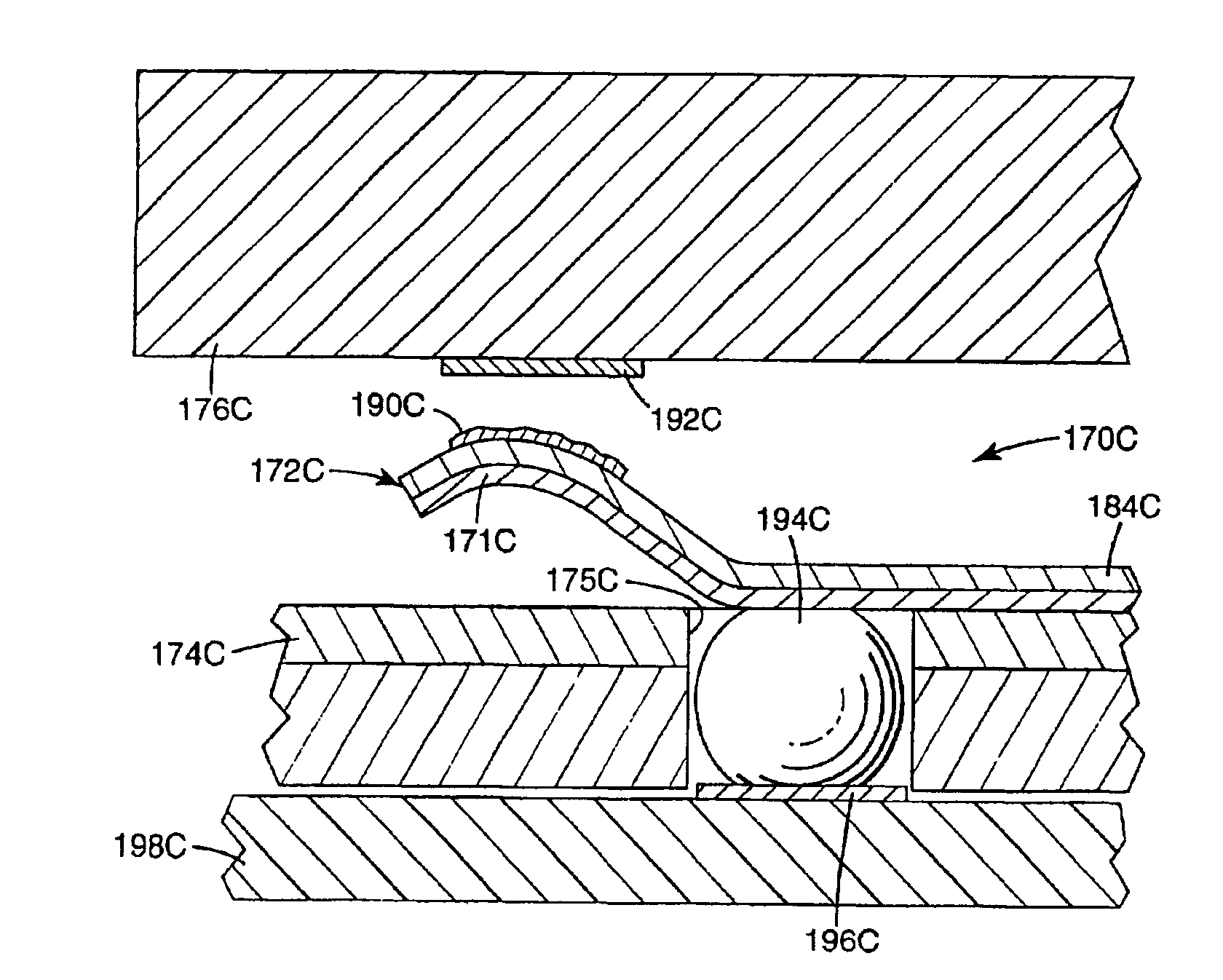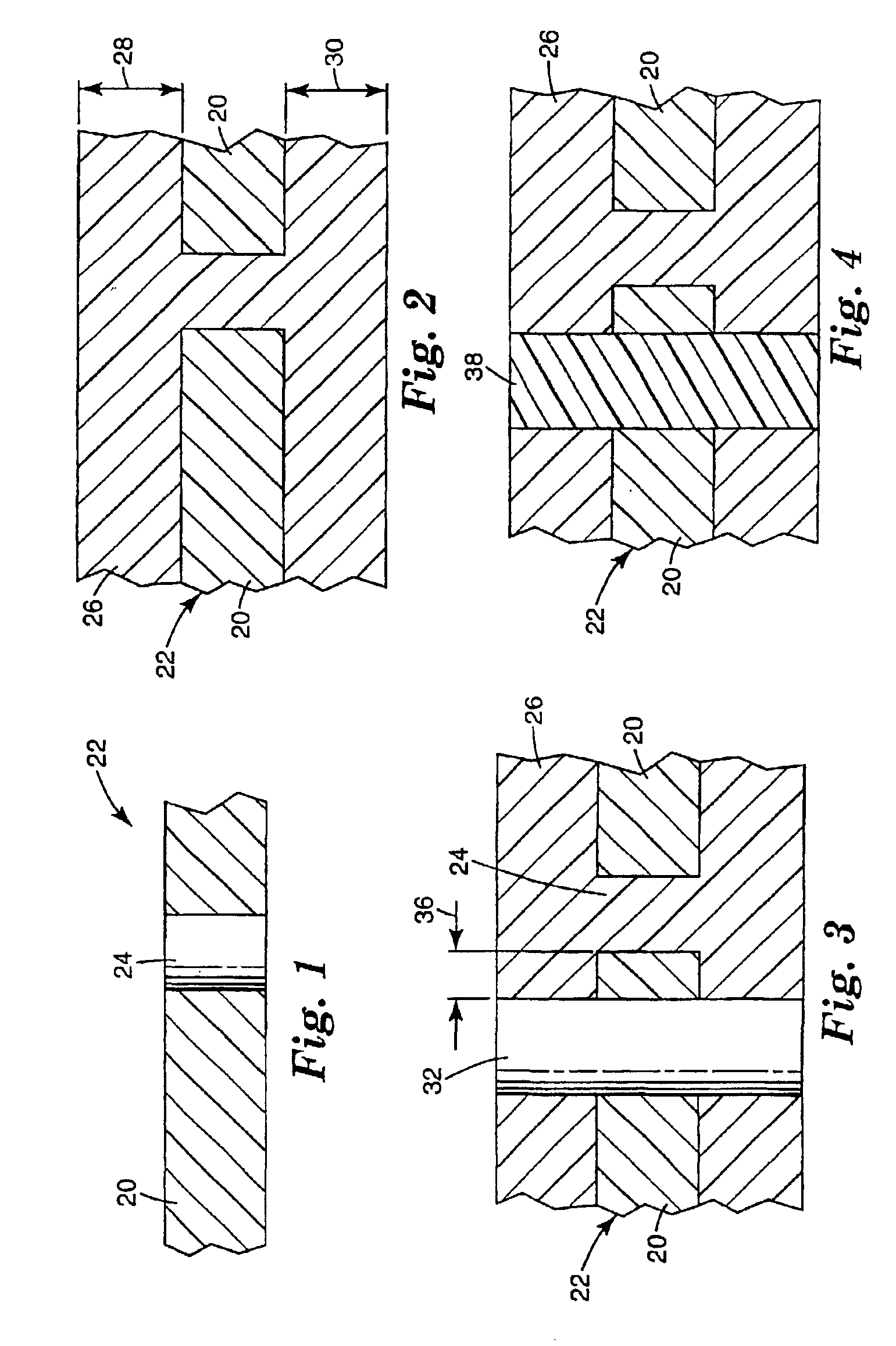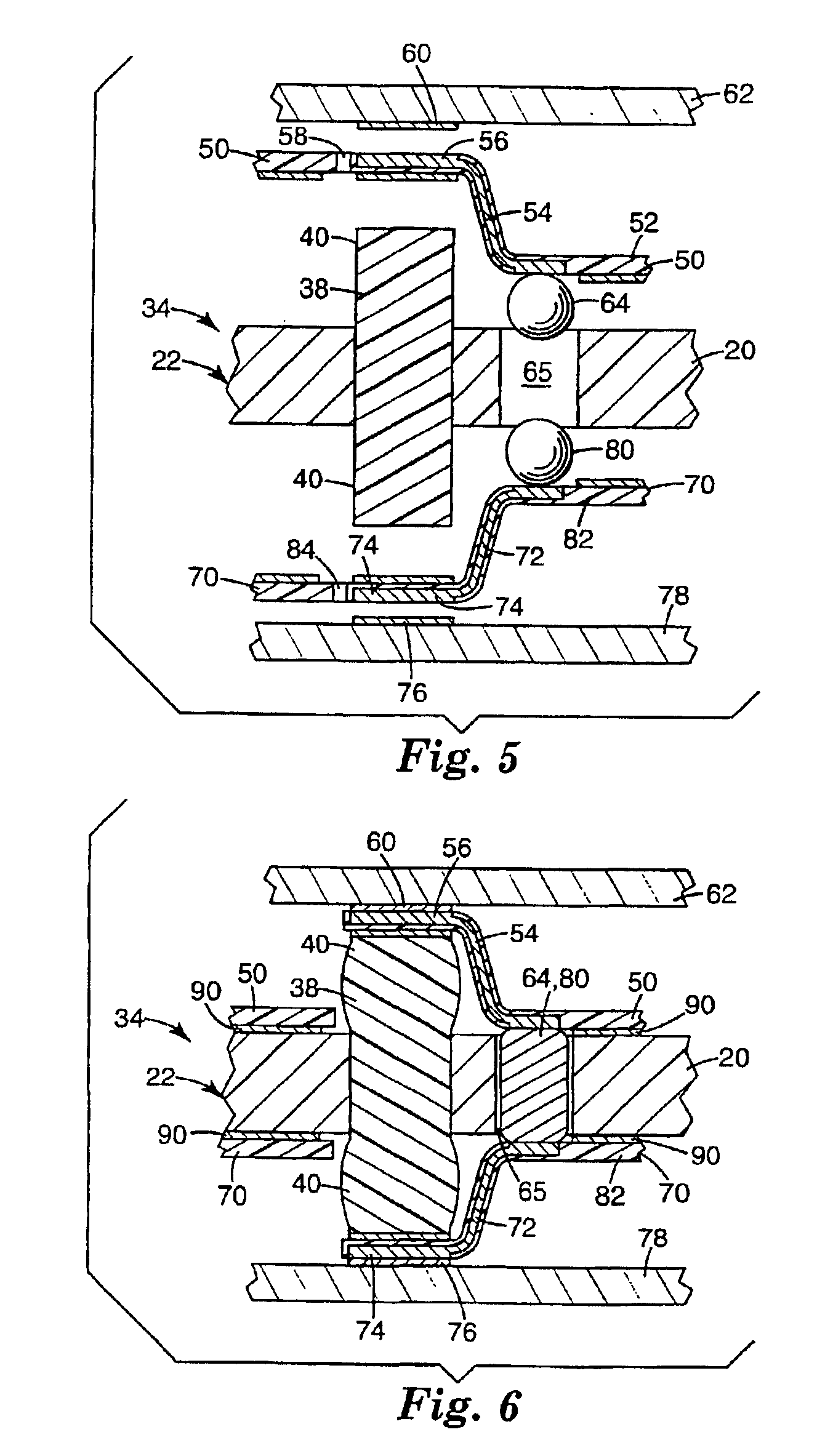Flexible compliant interconnect assembly
a technology of interconnects and assemblies, applied in the direction of connection contact member materials, connection devices, printed circuit non-printed electric components associations, etc., can solve the problems of stressing components, soldering these connectors to printed circuit boards, and the use of lead alloy solder and associated chemicals, etc., to achieve a large range of compliance
- Summary
- Abstract
- Description
- Claims
- Application Information
AI Technical Summary
Benefits of technology
Problems solved by technology
Method used
Image
Examples
Embodiment Construction
[0048]FIGS. 1-4 illustrate a method of preparing a compliant interconnect 22 in accordance with the present invention (see FIG. 5). The Figures disclosed herein may or may not be drawn to scale. The substrate 20 is perforated to include one or more through holes 24. The holes 24 can be formed by a variety of techniques, such as molding, stamping, laser drilling, or mechanical drilling. The holes 24 can be arranged in a variety of configurations, including one or two-dimensional arrays. As will be discussed below, some embodiments do not require the holes 24. The substrate 20 is typically constructed from a dielectric material, such as plastics, ceramic, or metal with a non-conductive coating. In some of the embodiments discussed below, an electrically active circuit member (see FIG. 11) is substituted for the electrically inactive substrate 20.
[0049]As illustrated in FIG. 2, the substrate 20 is then flooded with one or more masking materials 26, such as a solder mask or other materi...
PUM
 Login to View More
Login to View More Abstract
Description
Claims
Application Information
 Login to View More
Login to View More - R&D
- Intellectual Property
- Life Sciences
- Materials
- Tech Scout
- Unparalleled Data Quality
- Higher Quality Content
- 60% Fewer Hallucinations
Browse by: Latest US Patents, China's latest patents, Technical Efficacy Thesaurus, Application Domain, Technology Topic, Popular Technical Reports.
© 2025 PatSnap. All rights reserved.Legal|Privacy policy|Modern Slavery Act Transparency Statement|Sitemap|About US| Contact US: help@patsnap.com



